Forums
- Forums
- Duggy's Reference Hangar
- USAAF / USN Library
- Martin Mauler
Martin Mauler
Post a reply
- Go to Previous topic
- Go to Next topic
- Go to Welcome
- Go to Introduce Yourself
- Go to General Discussion
- Go to Screenshots, Images and Videos
- Go to Off topic
- Go to Works in Progress
- Go to Skinning Tips / Tutorials
- Go to Skin Requests
- Go to IJAAF Library
- Go to Luftwaffe Library
- Go to RAF Library
- Go to USAAF / USN Library
- Go to Misc Library
- Go to The Ops Room
- Go to Made in Germany
- Go to Campaigns and Missions
- Go to Works in Progress
- Go to Juri's Air-Raid Shelter
- Go to Campaigns and Missions
- Go to Works in Progress
- Go to Skinpacks
- Go to External Projects Discussion
- Go to Books & Resources
-
13 years agoFri Mar 28 2014, 07:43pm
 Main AdminThe Martin AM Mauler (originally BTM) was a shipboard attack aircraft of the United States Navy. Designed during World War II, the Mauler encountered production delays and did not enter service until March 1948. A total of 151 aircraft were built, remaining in front line service only until 1950, when the Navy standardized on the smaller and simpler Douglas AD Skyraider. Maulers remained in reserve squadrons until 1953. In service the Mauler earned the nickname "Able Mable" because of its remarkable load carrying ability, once lifting a 14,179 lb useful load, including 10,689 lbs of ordnance, easily the heaviest load ever carried by a single-engine piston-powered aircraft.
Main AdminThe Martin AM Mauler (originally BTM) was a shipboard attack aircraft of the United States Navy. Designed during World War II, the Mauler encountered production delays and did not enter service until March 1948. A total of 151 aircraft were built, remaining in front line service only until 1950, when the Navy standardized on the smaller and simpler Douglas AD Skyraider. Maulers remained in reserve squadrons until 1953. In service the Mauler earned the nickname "Able Mable" because of its remarkable load carrying ability, once lifting a 14,179 lb useful load, including 10,689 lbs of ordnance, easily the heaviest load ever carried by a single-engine piston-powered aircraft.
Design and development
In the 1930s and early 1940s, the Navy differentiated between two types of carrier-borne bomber: the torpedo bomber and the dive bomber. In 1943, this distinction was abandoned, and the US Navy invited proposals for a new multi-purpose bomber. In 1944, four new designs were offered as shipborne attack aircraft: the Curtiss XBTC-1/2, Douglas XBT2D-1, Kaiser-Fleetwings XBTK-1 and the Martin XBTM-1. Martin was tasked to provide a back-up to the Curtiss design which had been selected as a replacement to their SB2C Helldiver. Due to the US Navy's concern that the Curtiss design was overly complex and that the company's production record was particularly suspect in the Helldiver development phase, Martin was instructed to create an "unexperimental" design that would be a reliable platform for the Pratt & Whitney R-4360 Wasp Major that powered both aircraft. Two prototypes were ordered from Martin on 31 May 1944.
A Naval Air Reserve AM-1Q.
The first XBTM-1 flew on 26 August 1944, piloted by O.E. "Pat" Tibbs, Martin's Chief Test Pilot. The second prototype soon joined the fight test unit, followed up by 16 pre-production BTM Maulers. In 1946, the aircraft designation was changed to AM-1.
Below XTBM-1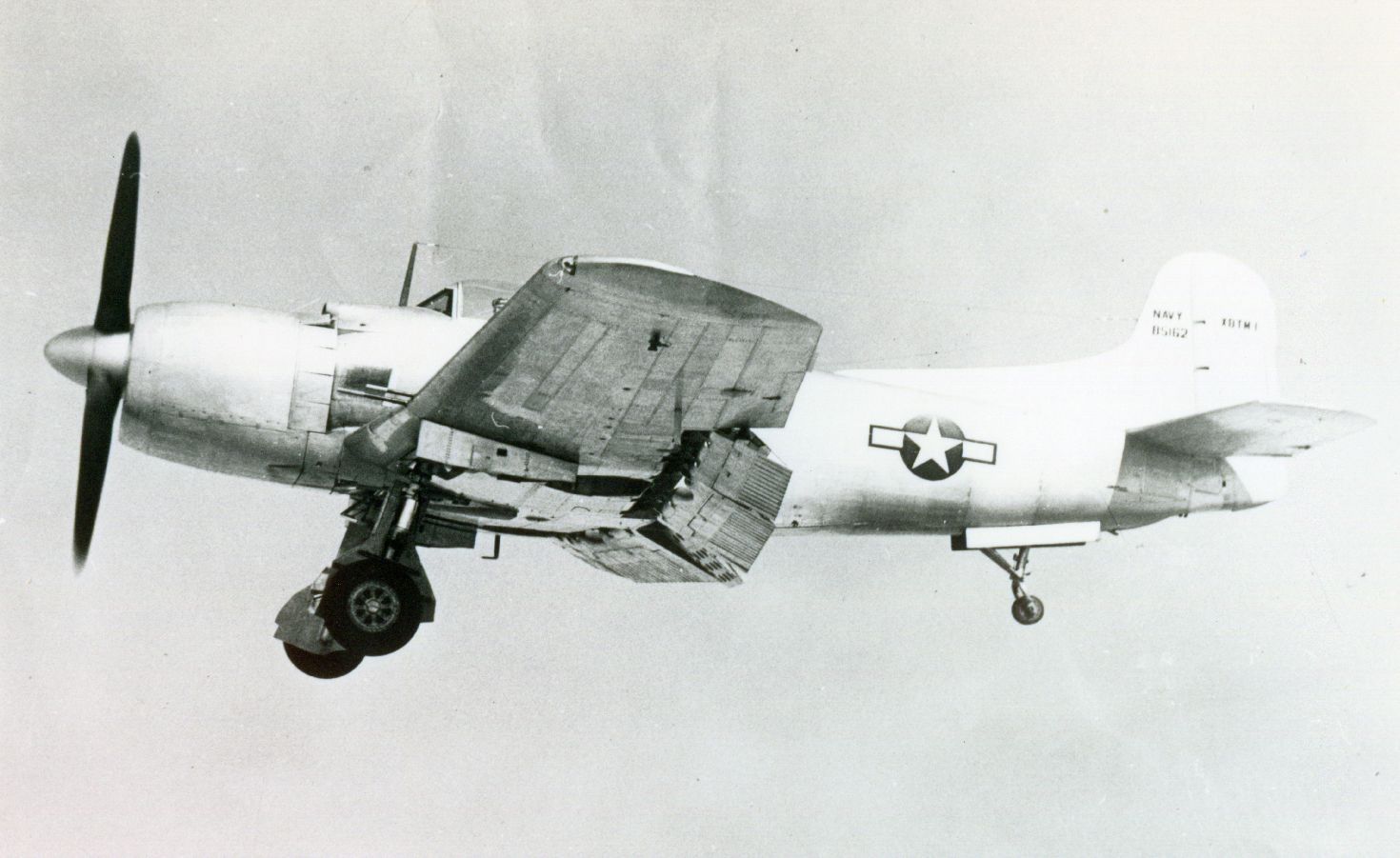
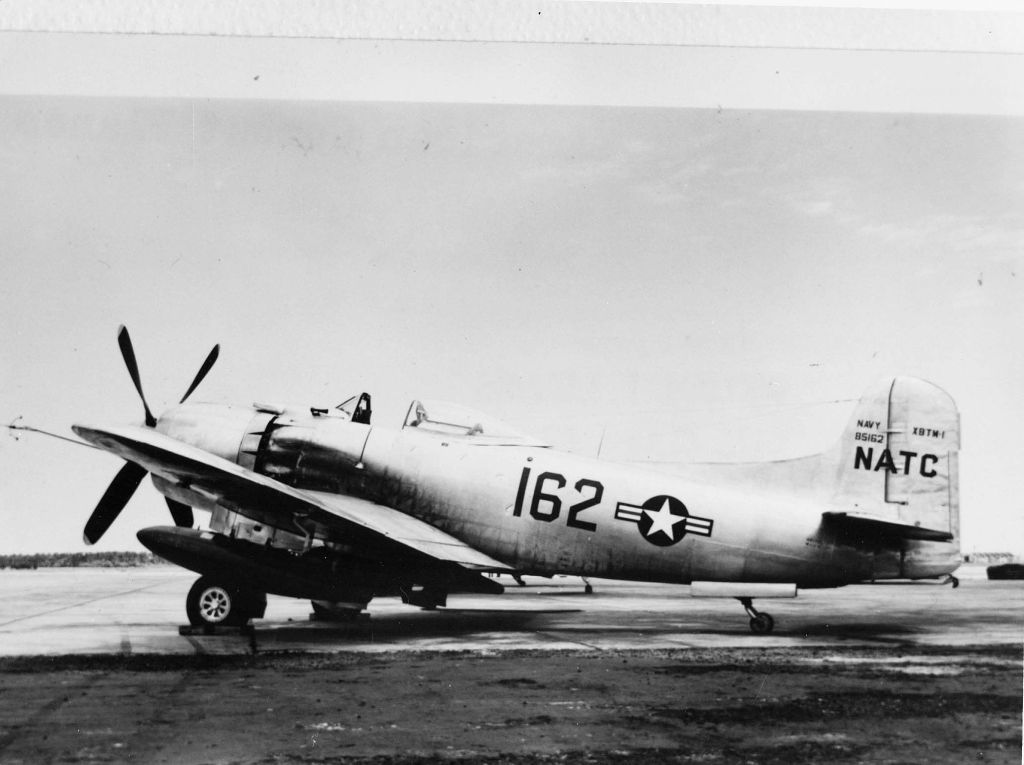




Delivery of Maulers began in July 1947, but problems with the tail hooks damaging the rear fuselage delayed service entry another year,[4] and Mauler did not enter Navy service until March 1948, when Maulers began operating with VA-17A in the Atlantic Fleet. Maulers quickly gained a reputation as remarkable load lifters; on one occasion a Martin test pilot flew one hauling three 2,200 lb (1,000 kg) torpedoes, 12 500 lb (230 kg) bombs, guns, and a full load of ammunition ? a total of 10,689 pounds (4,848 kg) of ordnance, and a 14,179 pounds (6,431 kg) useful load, a record at the time for a single-engine aircraft. Gross weight for that flight was 29,332 pounds (13,305 kg). Bomb loads in carrier service were smaller, and the aircraft gained a mostly-deserved reputation for being hard to land on carrier decks, leading to the nickname of "Awful Monsters". Pilots more favorably impressed by the bombload interpreted AM as "Able Mable".
With the prospect of flying both the similar AD-1 Skyraider and AM-1 in carrier operations, the US Navy assigned the Maulers to Atlantic Fleet squadrons. Although the Skyraider was a third smaller and carried a third less bombload, it proved much more reliable in service and easier to fly and land, and Navy pilots preferred it. In 1950, the decision was made to use the Mauler only from shore-based units and, later that year, all but Naval Reserve units abandoned the type. The aircraft continued to operate with reserve squadrons until 1953.
The AM-1Q was developed for electronic countermeasures (ECM) duties. The fuselage fuel tank was removed to make room for the ECM operator and his equipment. Twelve aircraft were built on the main production line.
Below AM-1/Q











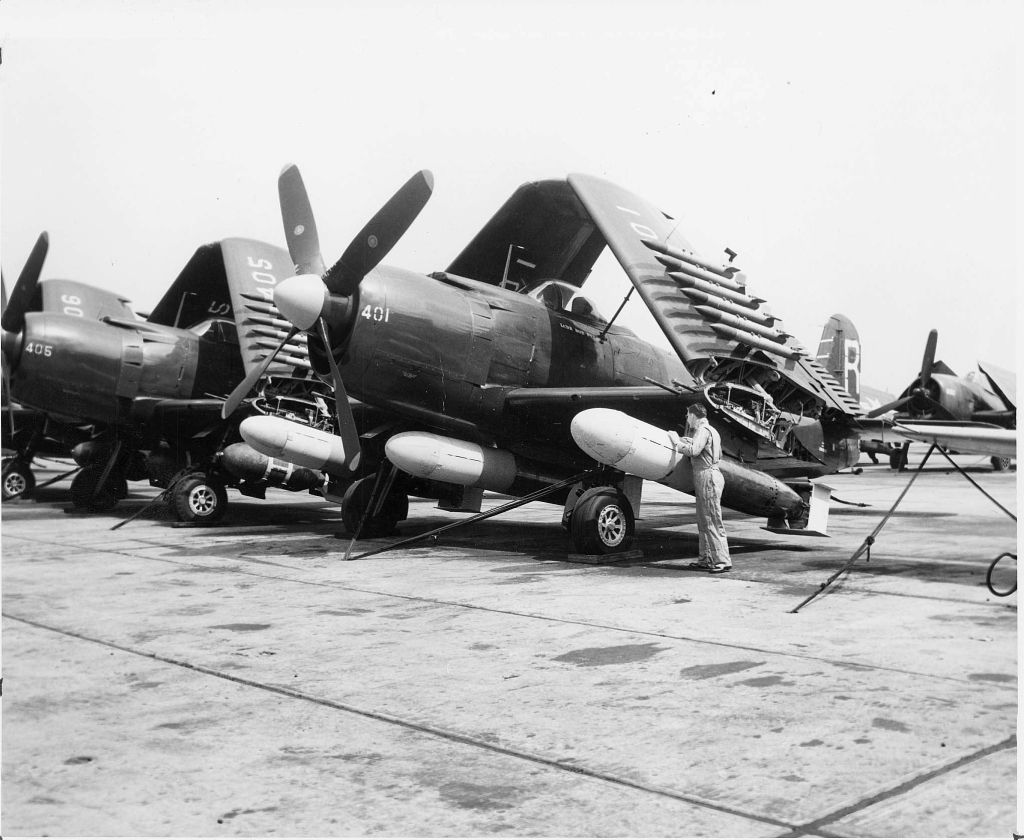

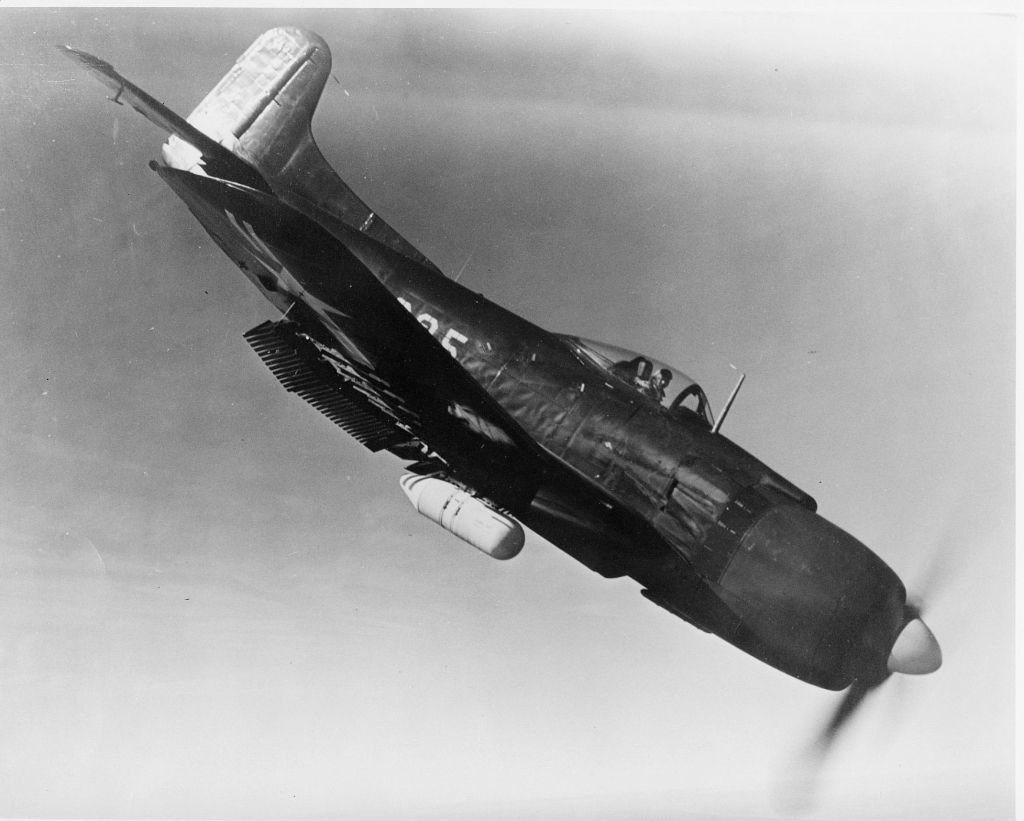













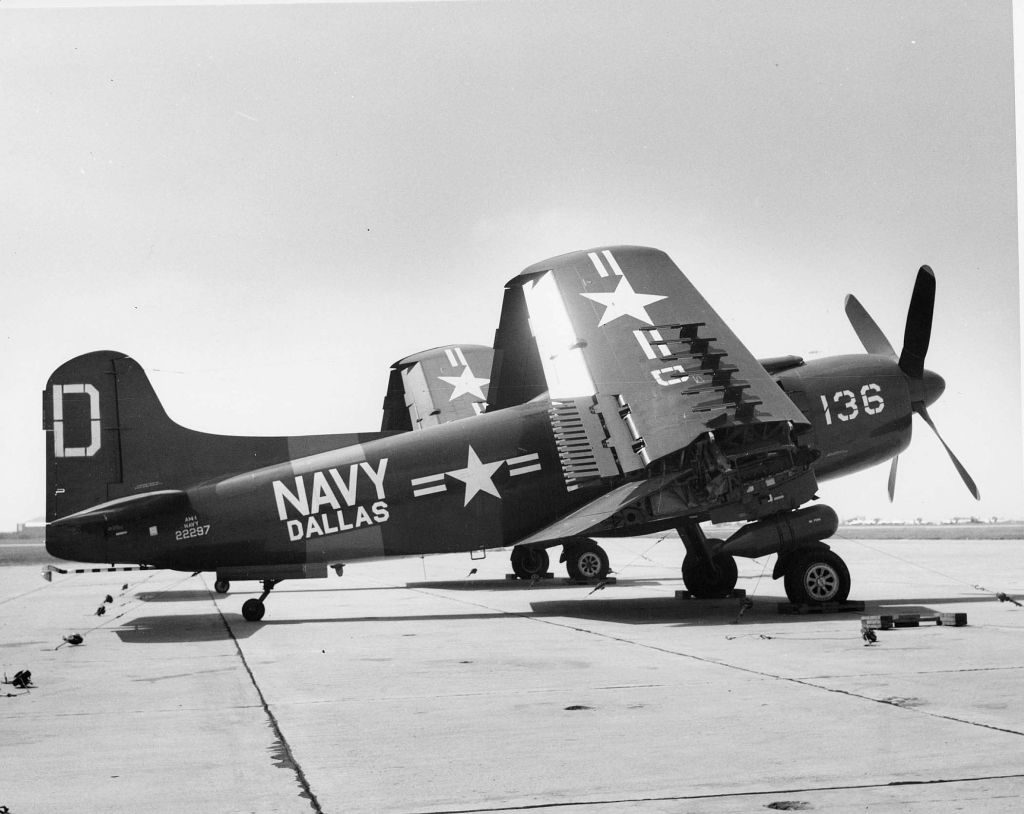



Specifications for the AM-1
Manufacturer: Glenn L. Martin Company
Dimensions: Length: 42 ft., 2 in.; Height 16 ft., 10 in.; Wingspan: 50 ft.
Weights: Empty: 14,500 lb.; Gross: 23,386 lb.
Power Plant: One 3,000 horsepower Wright R-4360-4W engine
Performance: Maximum Speed: 367 M.P.H. at 11,600 ft.; Service Ceiling: 30,500 ft.; Range: 1,800 miles
Armament: Four 20mm fixed forward-firing cannon and 4,500 lb. of ordnance
Crew: Pilot
Regards Duggy.
Post a reply
- Go to Previous topic
- Go to Next topic
- Go to Welcome
- Go to Introduce Yourself
- Go to General Discussion
- Go to Screenshots, Images and Videos
- Go to Off topic
- Go to Works in Progress
- Go to Skinning Tips / Tutorials
- Go to Skin Requests
- Go to IJAAF Library
- Go to Luftwaffe Library
- Go to RAF Library
- Go to USAAF / USN Library
- Go to Misc Library
- Go to The Ops Room
- Go to Made in Germany
- Go to Campaigns and Missions
- Go to Works in Progress
- Go to Juri's Air-Raid Shelter
- Go to Campaigns and Missions
- Go to Works in Progress
- Go to Skinpacks
- Go to External Projects Discussion
- Go to Books & Resources
